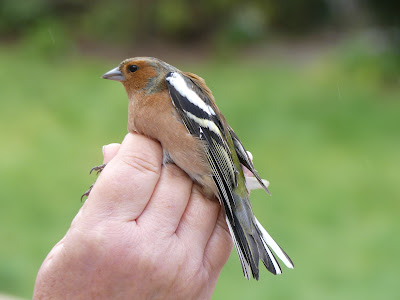Success!
This was the third attempt by us to capture wintering Blackcaps in conjunction with the Norfolk Ornithological Association. This collaboration came about when SG a member of the Cley Bird Club messaged the group that he had at least three Blackcap feeding in his garden over winter. CL replied, advising of a national project, run by Greg Conway of the British Trust for Ornithology, to colour ring and track Blackcaps wintering in the UK. ERB of the NOA agreed to arrange with GC to take part in the project, however there was a delay in getting the new authorisation on her permit, hence our involvement as we have been authorised agents on the project a few years now.
After two unsuccessful attempts we made out final try on March 12th, nearing the March 15th deadline for the project, after which there is a risk that captured birds may have just arrived for the summer. We were fortunate to capture and mark two females. Both were first winter birds.
Photo by ERB
Photo by ERB
These birds have spent the winter at a well fed garden in sight of the North Norfolk coast.
Before the 1960s all Blackcaps seen in the UK appeared to be summer migrants, but since that time the numbers seen during the winter months have been steadily increasing. Global warming and garden feeding is believed to have created the necessary conditions to permit this to be a viable winter strategy for the birds. For some time it has been known, from ringing, that Blackcap that winter in the UK tend to have been bred in Southern Germany. However studies at the University of Freiburg have shown that Blackcaps that spend the winter in Spain have genetic differences to the Blackcaps that summer and breed in Germany then winter in the UK.
The academic community believe this could mean the two populations are on their way to becoming separate species providing a wonderful opportunity to study this process. This project aims to gather data on the movements of these birds while in the UK and contribute to our knowledge of Blackcap migration.
References
https://www.rspb.org.uk/birds-and-wildlife/wildlife-guides/bird-a-z/blackcap/migration/

















